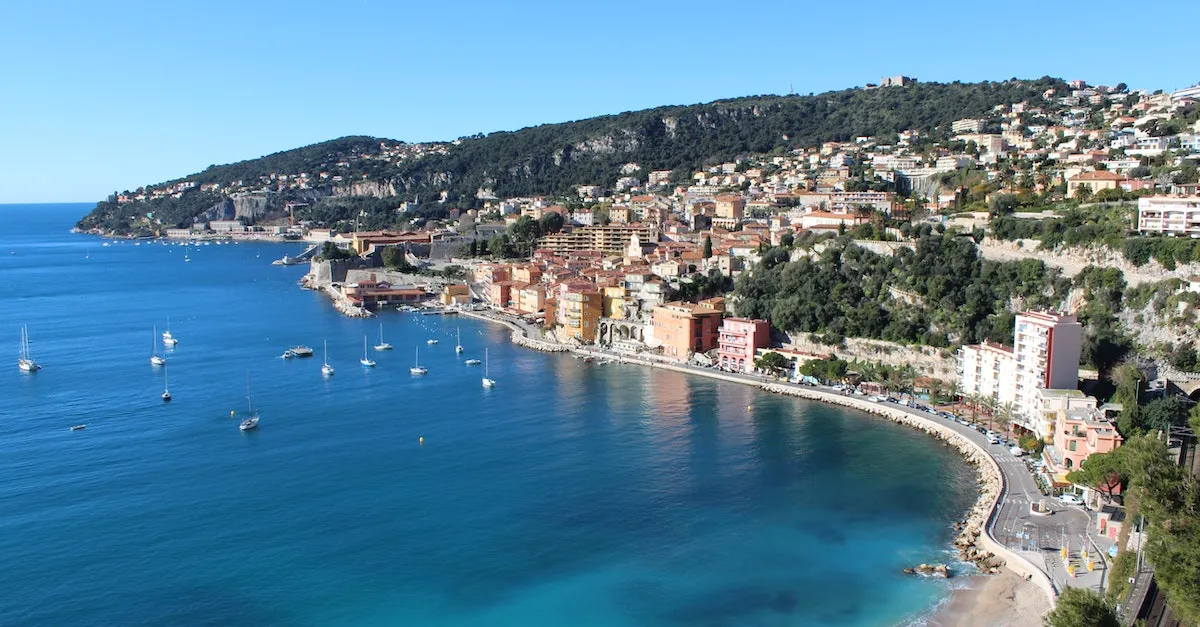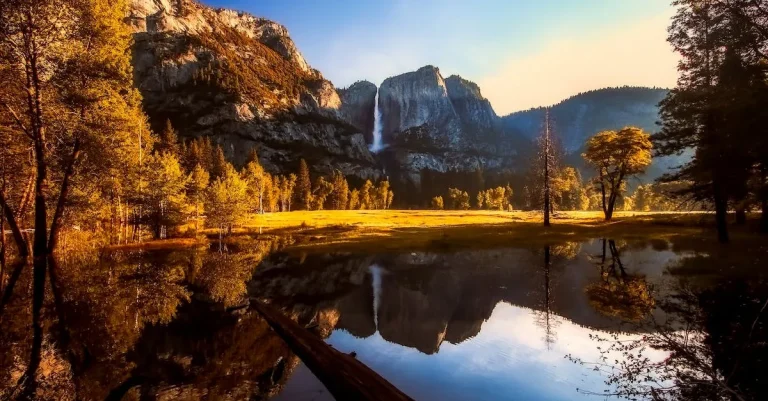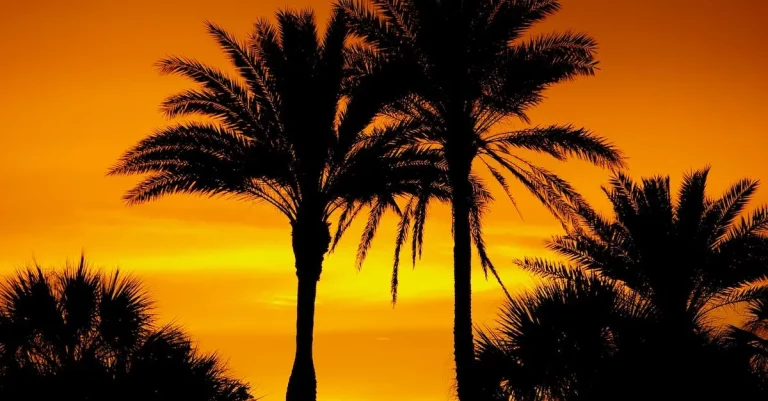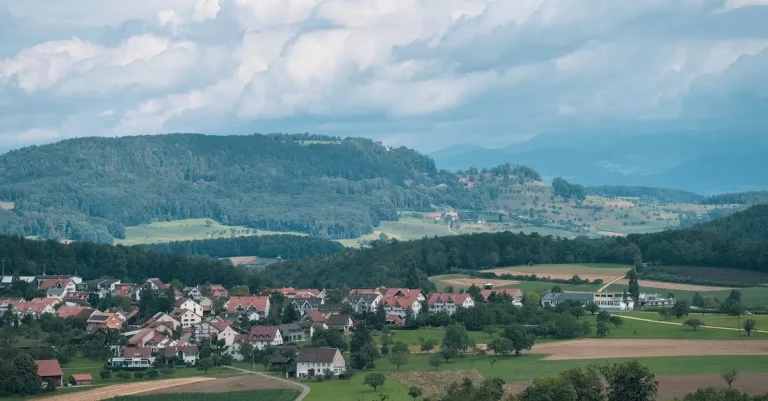What Does Florida Look Like? A Detailed Overview Of The Sunshine State’S Geography And Landscape
With over 1,300 miles of coastline and a subtropical climate, Florida is a diverse state with many natural wonders. From sandy beaches to swampy wetlands, Florida’s landscape ranges from flat, low-lying terrain to gently rolling hills. If you’re wondering exactly what Florida looks like, read on for a comprehensive overview of the Sunshine State’s varied geography and terrain.
In short, Florida is a large peninsula with mostly flat topography, a hot and humid subtropical climate in the north transitioning to a tropical climate in the south, and environments ranging from coastal to inland wetlands, forests, Barrier Islands, the Everglades, and of course, world-famous beaches along both its Atlantic and Gulf coasts.
Florida’s Overall Geography
When it comes to geography, Florida is truly unique. Situated in the southeastern United States, Florida is a state known for its diverse landscapes and breathtaking natural beauty. From the iconic Florida Peninsula to its stunning coastlines and vast wetlands, the Sunshine State has a lot to offer to both residents and visitors alike.
Florida Peninsula
The Florida Peninsula is the defining feature of the state’s geography. It extends southward from the mainland and separates the Atlantic Ocean from the Gulf of Mexico. Shaped like a boot, it is surrounded by water on three sides, making it a prime location for water-based activities and recreation.
Flat Topography
One notable characteristic of Florida’s geography is its predominantly flat topography. The state is known for its low elevation, with the highest natural point, Britton Hill, standing at just 345 feet above sea level.
This flatness contributes to the state’s vulnerability to flooding during storms and hurricanes.
Coastlines and Beaches
Florida boasts over 1,300 miles of coastline, making it a coveted destination for beach lovers. From the bustling shores of Miami Beach to the serene stretches of the Florida Keys, the state offers a wide variety of beach experiences.
The pristine white sand and crystal-clear waters of Florida’s beaches attract millions of tourists each year.
Barrier Islands
Along the coastlines of Florida, you’ll find numerous barrier islands. These elongated landforms serve as a natural buffer between the mainland and the ocean, protecting the mainland from storm surges and erosion.
Some well-known barrier islands in Florida include Sanibel Island, Captiva Island, and Amelia Island.
Wetlands
Florida is home to an extensive network of wetlands, including the famous Everglades. These wetlands provide vital habitats for a diverse range of plant and animal species. They also serve as natural filters, purifying water and helping to prevent flooding by absorbing excess rainwater.
Major Geographic Regions
Florida can be divided into several major geographic regions, each with its own distinct characteristics. The Panhandle, located in the northwest, is known for its rolling hills and stunning coastline. Central Florida is home to the iconic theme parks of Orlando and the expansive Lake Okeechobee.
The southernmost part of the state, known as South Florida, is renowned for its vibrant cities, including Miami and Fort Lauderdale.
For more detailed information about Florida’s geography and landscape, you can visit the official website of the Florida Tourism Board.
North Florida
North Florida is a diverse region with a unique geography and landscape. From the beautiful Panhandle to the stunning Pine Flatwoods, this part of the state offers a variety of natural wonders for visitors and residents to explore.
Panhandle
The Panhandle region of North Florida is known for its breathtaking white sandy beaches and emerald green waters. It is a popular destination for tourists looking to relax and enjoy the sunshine. The Panhandle is also home to several state parks, such as Grayton Beach State Park and St. Andrews State Park, where visitors can hike, camp, and spot wildlife.
Pine Flatwoods
The Pine Flatwoods of North Florida are characterized by vast stretches of pine trees and rolling hills. This unique ecosystem is home to a variety of plant and animal species, including the endangered Red-cockaded Woodpecker.
Visitors can explore the Pine Flatwoods through hiking trails and nature preserves, such as the Apalachicola National Forest.
Springs and Sinkholes
North Florida is famous for its numerous springs and sinkholes. These natural wonders are formed when limestone erodes, creating underground cavities. Some of the most popular springs in the region include Ichetucknee Springs and Ginnie Springs, where visitors can swim, snorkel, and dive in crystal-clear waters.
Additionally, the region is dotted with stunning sinkholes, such as the Devil’s Millhopper Geological State Park.
Lakes and Rivers
North Florida is blessed with an abundance of lakes and rivers, making it a paradise for water enthusiasts. The St. Johns River, which flows northward, is the longest river in Florida and offers opportunities for boating, fishing, and wildlife spotting.
Lake Okeechobee, located in the northern part of the state, is the second-largest freshwater lake in the United States and is a popular spot for fishing and birdwatching.
Central Florida
Central Florida is a region in the heart of the Sunshine State that is known for its diverse geography and beautiful landscapes. From bustling cities to serene lakes and rolling hills, Central Florida offers a little something for everyone.
Orlando Area
One of the highlights of Central Florida is the Orlando area, which is home to world-famous theme parks such as Walt Disney World Resort, Universal Orlando Resort, and SeaWorld Orlando. These attractions draw millions of visitors each year, making Orlando one of the most popular tourist destinations in the world.
In addition to the theme parks, the city of Orlando itself offers a vibrant downtown area with a thriving arts and culture scene, trendy restaurants, and lively nightlife.
Lakes and Wetlands
Central Florida is also known for its abundance of lakes and wetlands. The region is dotted with hundreds of natural and man-made lakes, making it a paradise for boating, fishing, and water sports enthusiasts.
One of the most famous lakes in Central Florida is Lake Okeechobee, which is the largest freshwater lake in the state. The wetlands in Central Florida, including the Everglades, are home to a diverse range of plant and animal species and offer opportunities for nature lovers to explore and appreciate the unique ecosystem.
Rolling Hills
Contrary to the popular image of Florida being flat and sandy, Central Florida is characterized by its rolling hills. The region is part of the Lake Wales Ridge, a series of sand ridges that run through the central part of the state.
These hills provide a scenic backdrop for outdoor activities such as hiking, biking, and horseback riding. One of the most well-known areas for hilltop views is the Clermont area, which offers breathtaking vistas of the surrounding landscape.
Citrus Groves
Central Florida is often referred to as the “Citrus Capital of the World” due to its thriving citrus industry. The region’s mild climate and fertile soil make it ideal for growing citrus fruits such as oranges, grapefruits, and tangerines.
Driving through Central Florida, you will often come across vast citrus groves stretching as far as the eye can see. Visitors can even pick their own citrus fruits at many of the local farms and enjoy the fresh taste of Florida.
South Florida
South Florida is a region known for its diverse and unique geographical features. From the expansive Everglades to the picturesque Florida Keys, this area boasts a stunning landscape that attracts visitors from all over the world.
Everglades
The Everglades, a UNESCO World Heritage site, is a vast wetland ecosystem that covers a significant portion of South Florida. It is home to a wide variety of plant and animal species, including the iconic American alligator.
The Everglades is also a crucial source of freshwater for the region and plays a vital role in maintaining the delicate balance of the ecosystem.
Big Cypress Swamp
Located adjacent to the Everglades, the Big Cypress Swamp is another fascinating natural landmark in South Florida. This expansive swamp is characterized by its dense cypress forests, marshes, and abundant wildlife.
Visitors have the opportunity to explore the swamp through hiking trails, airboat tours, and guided excursions, providing a unique and up-close experience with nature.
Florida Keys
The Florida Keys, a string of islands stretching from the southern tip of Florida into the Gulf of Mexico, are a popular destination for both locals and tourists. Known for their stunning beaches, crystal-clear turquoise waters, and vibrant marine life, the Keys offer a tropical paradise for those seeking relaxation and adventure.
Key West, the southernmost city in the continental United States, is a bustling hub of culture, history, and nightlife.
Coral Reefs
The waters surrounding the Florida Keys are home to the only living coral barrier reef in the continental United States. This ecosystem supports a dazzling array of coral species, fish, and other marine organisms.
Snorkeling and scuba diving enthusiasts flock to the area to explore these vibrant coral reefs and encounter the mesmerizing underwater world.
For more information about South Florida’s geography and landscape, you can visit the official website of the Visit Florida.
Climate and Ecosystems
Florida is known for its diverse climate and unique ecosystems, making it a paradise for nature enthusiasts. The state’s location in the southeastern United States gives it a subtropical climate, characterized by hot and humid summers and mild winters.
However, within this subtropical climate, there are also tropical elements that contribute to the state’s overall climate patterns.
Subtropical vs. Tropical
Florida’s subtropical climate is influenced by its proximity to the Gulf of Mexico and the warm waters of the Gulf Stream. This means that the state experiences hot and humid summers, with temperatures often reaching into the high 90s Fahrenheit (around 35 degrees Celsius).
Winters in Florida are mild, with temperatures rarely dropping below freezing in most parts of the state.
In addition to its subtropical climate, Florida also has tropical elements, especially in the southern part of the state. The Florida Keys, for example, have a true tropical climate, with warm temperatures year-round and a distinct wet and dry season.
The tropical climate in this region creates a unique ecosystem, supporting a wide range of plant and animal species found nowhere else in the United States.
Mangrove Forests
One of the most iconic ecosystems in Florida is the mangrove forest. These unique and important coastal ecosystems are found along the state’s extensive coastline. Mangrove forests are characterized by their dense growth of mangrove trees, which have adapted to survive in saltwater environments.
These forests provide vital habitats for a variety of marine life, including fish, birds, and other wildlife.
Mangrove forests also act as natural buffers against storms and erosion, helping to protect Florida’s coastline. They are often referred to as the “nurseries of the sea” due to the important role they play in the life cycle of many marine species.
Exploring the mangrove forests of Florida is a must for any nature lover visiting the state.
Hardwood Hammocks
Another unique ecosystem found in Florida is the hardwood hammocks. These are small patches of forest that are characterized by a dense canopy of hardwood trees, such as oak and hickory. Hardwood hammocks provide important habitat for a variety of plant and animal species, including rare and endangered species.
These forested areas are often found on higher ground, away from the coast, and are typically surrounded by wetlands. They provide a cool and shaded environment, making them a popular destination for hikers and nature enthusiasts looking to escape the heat of the Florida sun.
Pine Rocklands
One more fascinating ecosystem found in Florida is the pine rocklands. These unique habitats are characterized by their rocky limestone substrate and the presence of pine trees. Pine rocklands are found primarily in the southern part of the state, particularly in the Everglades National Park and the Florida Keys.
These ecosystems are home to a diverse range of plant and animal species, many of which are endemic to the region. They are also an important habitat for the endangered Florida bonneted bat and the Miami tiger beetle.
Exploring the pine rocklands is a great way to experience the natural beauty and biodiversity of Florida.
Florida’s climate and ecosystems make it a truly remarkable place. From the subtropical climate to the unique mangrove forests, hardwood hammocks, and pine rocklands, the Sunshine State offers a wide range of natural wonders for visitors to explore and appreciate.
Conclusion
With its sprawling wetlands, sandy beaches, coral reefs, rolling hills, and flat terrain, Florida has diverse natural environments across its geography. The state transitions from subtropical in the north to tropical in the south, leading to ecosystems ranging from pine forests to mangrove swamps.
So in summary, Florida is largely a flat peninsula with expansive coastlines, a hot climate, and landscapes including beaches, swamps, forests, springs, farmlands, and more. Hopefully this overview gave you a good sense of exactly what the Sunshine State looks like!








